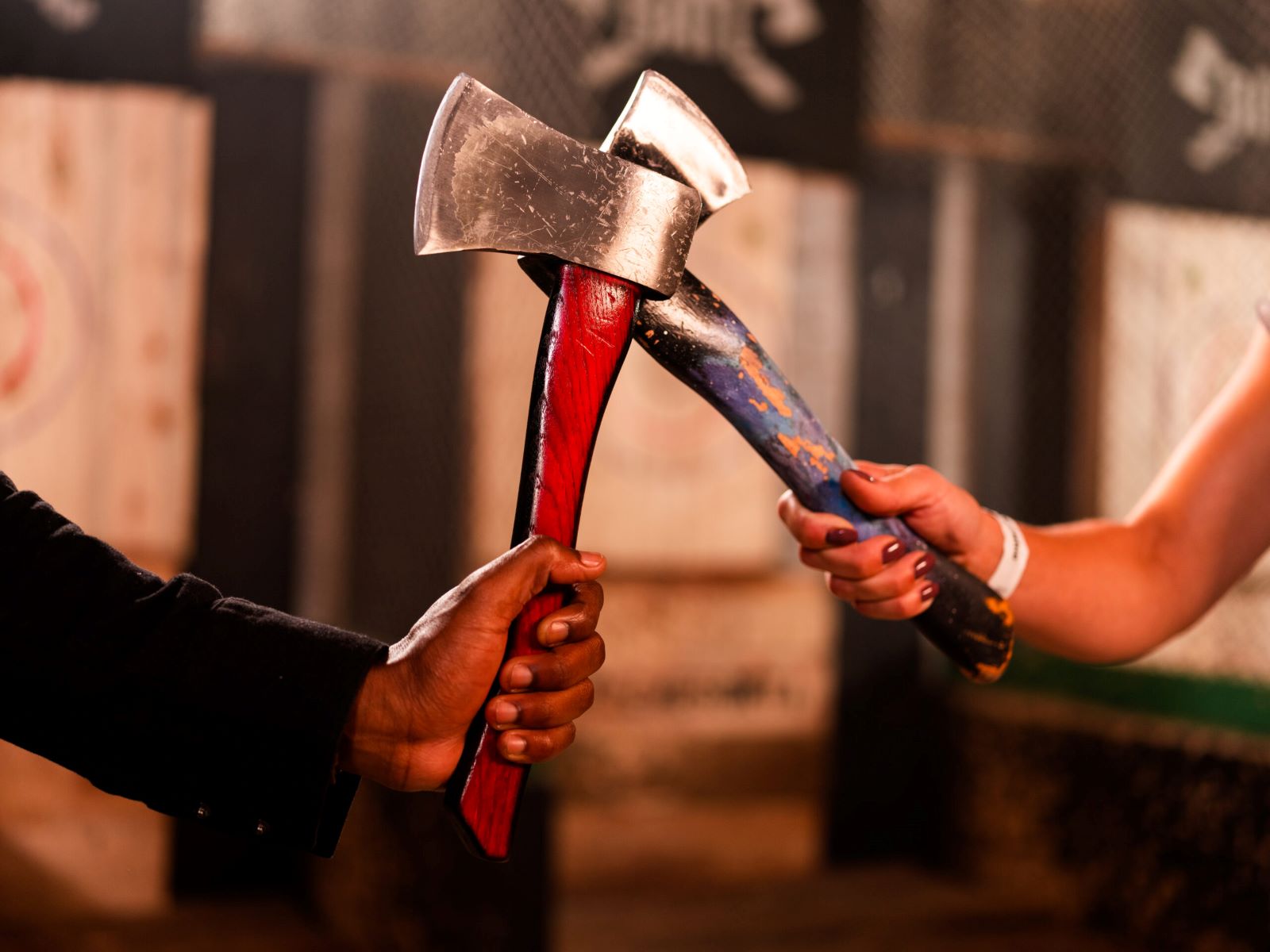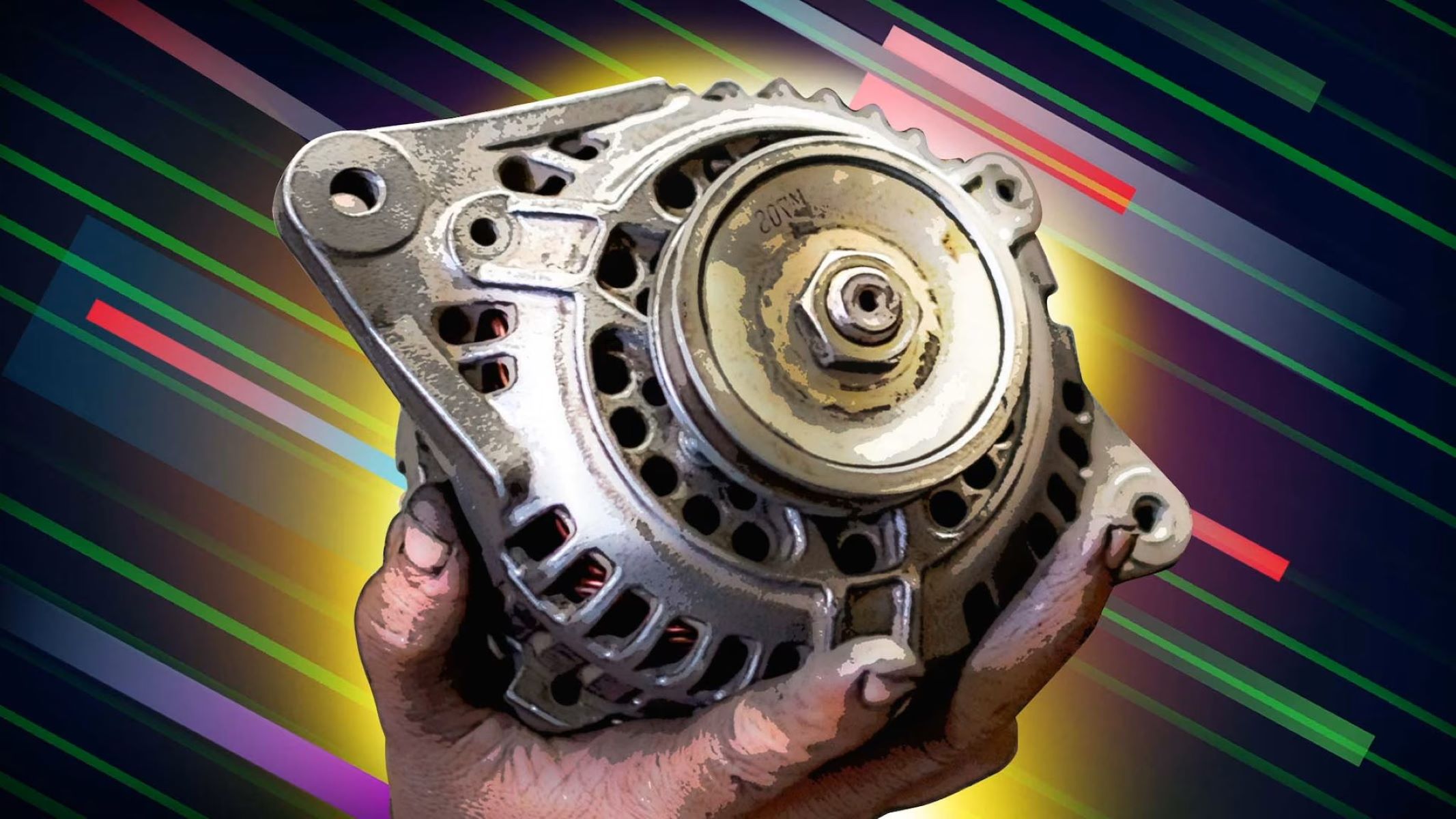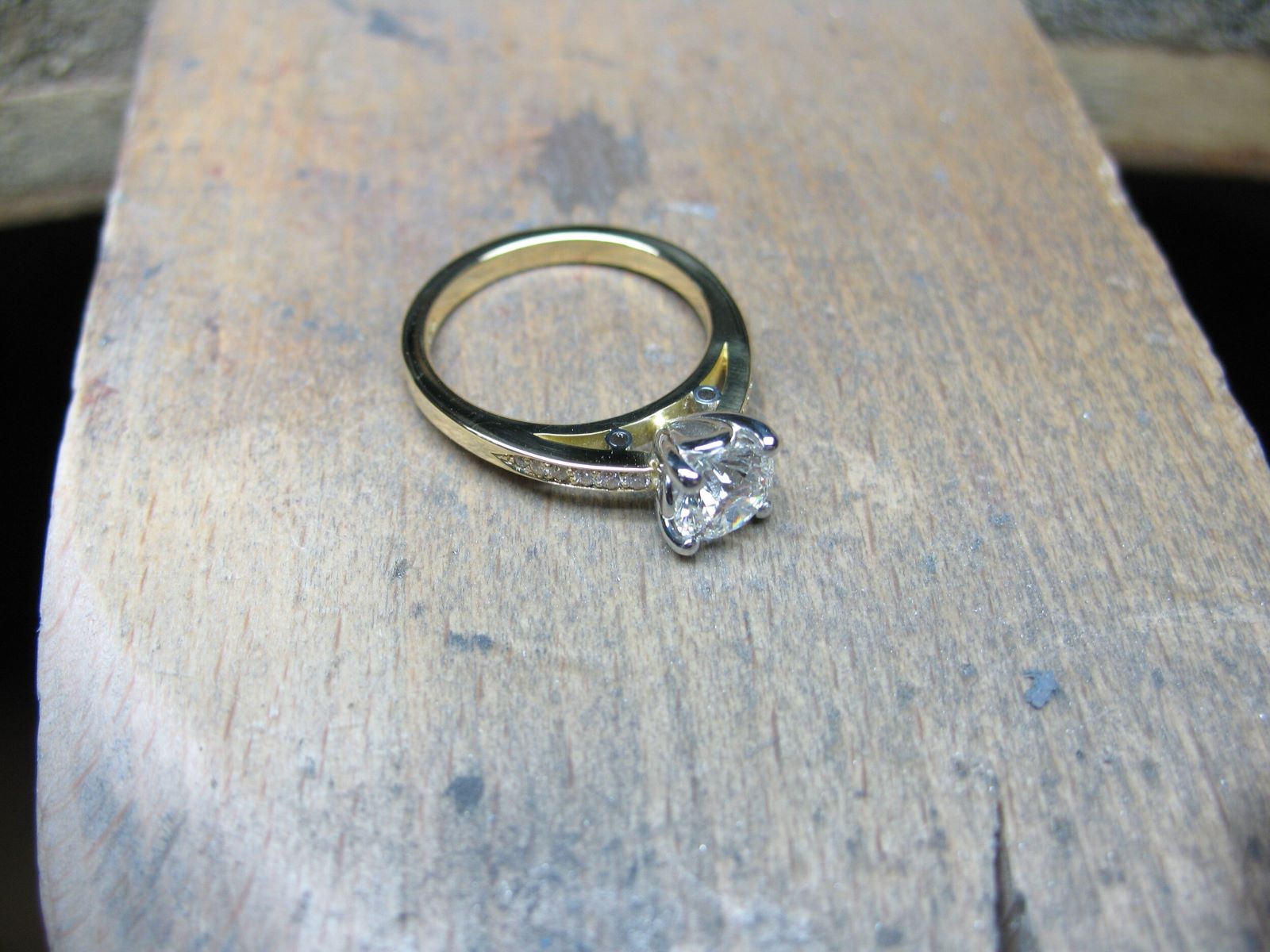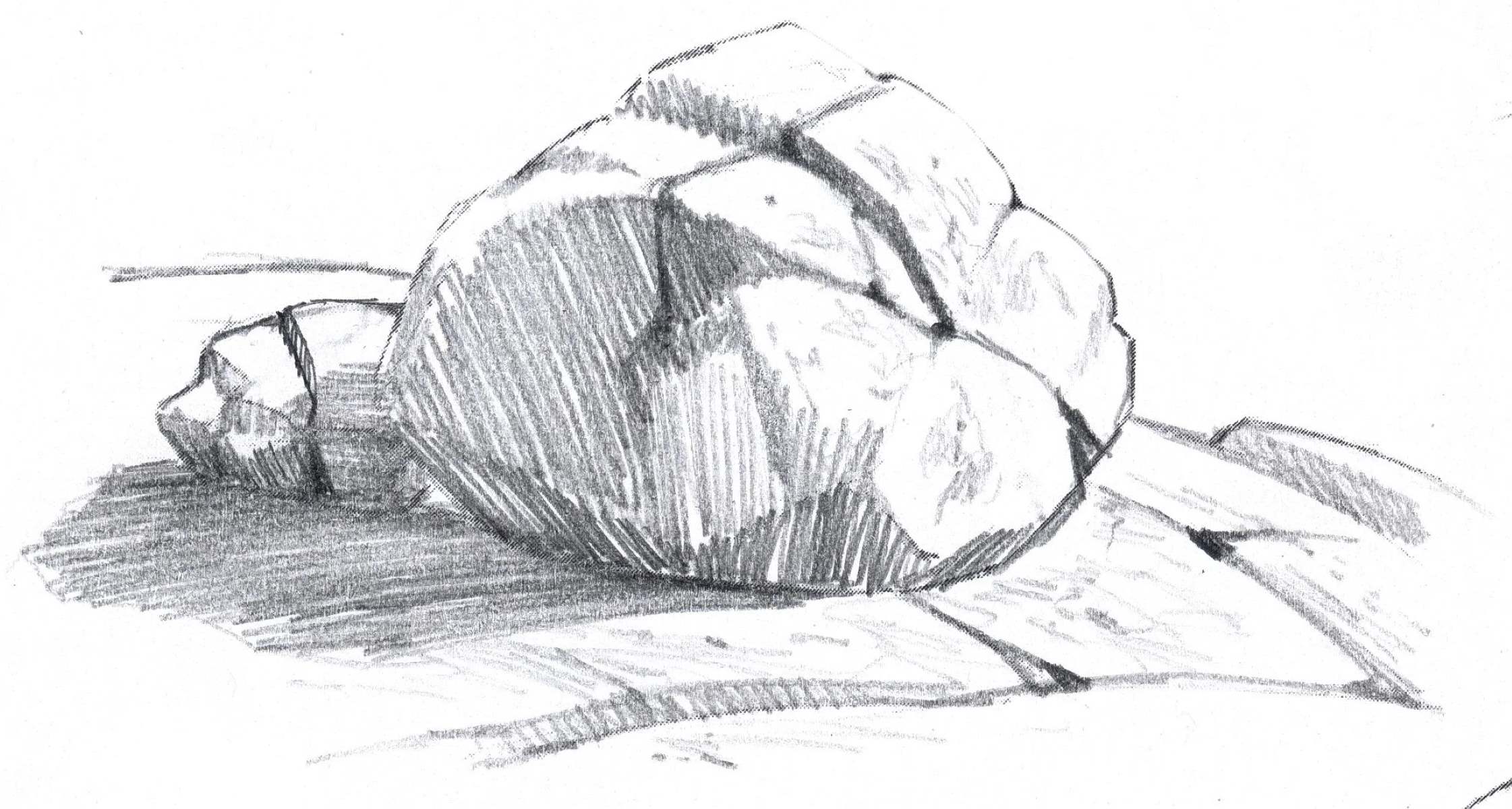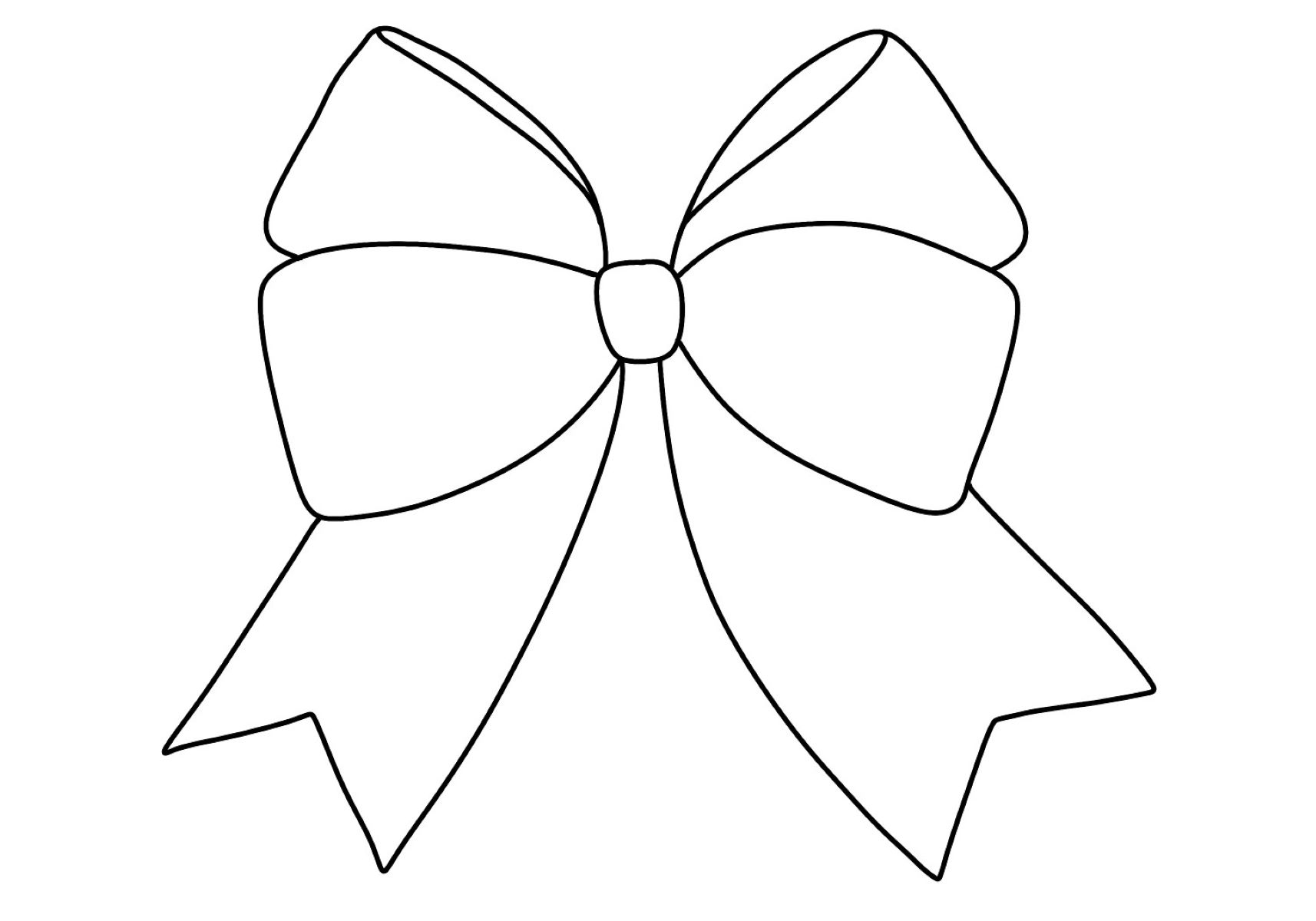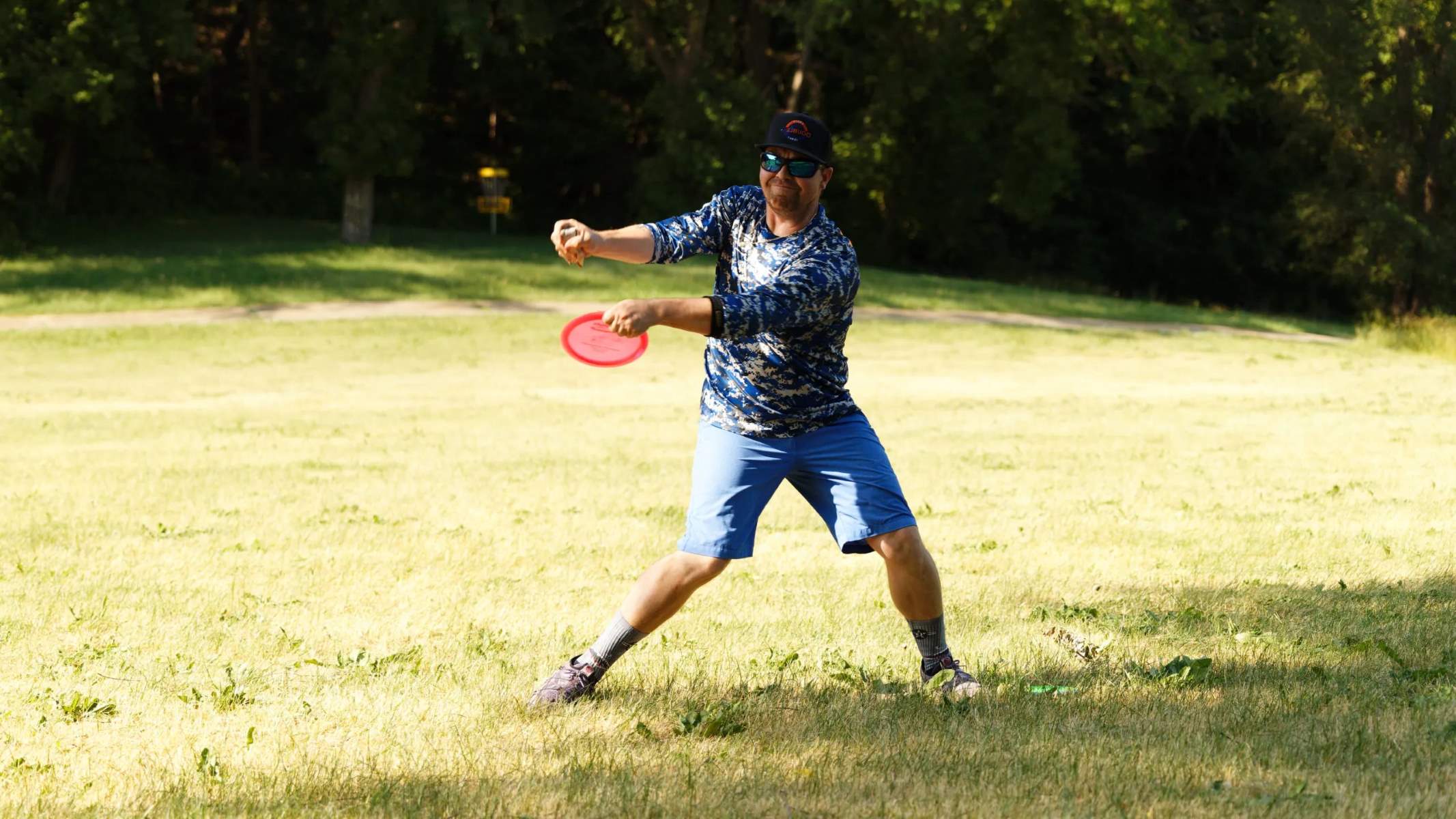

Sports
How To Throw A Frisbee Golf Disc
Published: March 4, 2024
Learn the best techniques for throwing a frisbee golf disc and improve your sports skills with our comprehensive guide. Master the art of frisbee golf today!
(Many of the links in this article redirect to a specific reviewed product. Your purchase of these products through affiliate links helps to generate commission for Regretless.com, at no extra cost. Learn more)
Table of Contents
Introduction
Frisbee golf, also known as disc golf, is a thrilling and challenging sport that combines the precision of golf with the exhilaration of throwing a frisbee. It's a game that can be enjoyed by people of all ages and skill levels, making it a fantastic outdoor activity for friends and family. Whether you're a seasoned disc golfer or a newcomer to the sport, mastering the art of throwing a frisbee golf disc can provide hours of entertainment and a great way to stay active.
In this comprehensive guide, we will delve into the essential techniques and strategies for throwing a frisbee golf disc with accuracy and finesse. From selecting the right disc to perfecting your throwing form and navigating the course, this article will equip you with the knowledge and skills needed to elevate your frisbee golf game to new heights.
As you embark on this exciting journey, keep in mind that frisbee golf is not just a physical activity; it's also a mental challenge that requires strategic thinking and adaptability. Whether you're aiming for a hole-in-one or aiming to improve your overall game, the key is to approach each throw with focus and determination.
So, grab your frisbee golf disc, lace up your shoes, and get ready to explore the captivating world of frisbee golf. With the right guidance and a passion for the game, you'll soon find yourself immersed in the joy of navigating lush fairways, avoiding obstacles, and experiencing the satisfaction of a well-executed throw.
Now, let's dive into the fundamentals of frisbee golf and discover the techniques that will help you become a formidable player on the course.
Read more: How To Regrip Golf Clubs
Choosing the Right Frisbee Golf Disc
Selecting the right frisbee golf disc is a crucial step in honing your skills and achieving success on the course. With a wide array of discs available, each designed for specific flight characteristics and distances, understanding the different types of discs is essential for optimizing your game.
Understanding Disc Types
1. Distance Drivers
These discs are engineered for maximum distance and are ideal for long-range throws. They typically have a sharp edge and a sleek profile, allowing them to cut through the air with minimal resistance. When selecting a distance driver, consider the speed and stability ratings, which indicate the disc's velocity and tendency to veer off course.
2. Fairway Drivers
Fairway drivers offer a balance between distance and control, making them versatile for various throwing techniques. With a slightly smaller rim compared to distance drivers, they provide enhanced accuracy and maneuverability, making them suitable for navigating wooded areas and tight fairways.
3. Midrange Discs
Midrange discs are designed for shorter throws and precise control. Their rounded edges and moderate stability enable players to execute accurate shots with minimal effort. These discs are indispensable for approaching the basket and overcoming obstacles with finesse.
4. Putters
Putters are essential for close-range shots and putting into the basket. They have a blunt edge and a stable flight path, allowing for precise and controlled throws. Putters are crucial for achieving accuracy and consistency in your short game.
Factors to Consider
When choosing a frisbee golf disc, consider factors such as your throwing style, arm speed, and the course layout. Disc weight also plays a significant role, as lighter discs are easier to throw for beginners, while heavier discs offer more stability and control in windy conditions.
Experiment and Adapt
As you progress in the sport, don't hesitate to experiment with different discs to find the ones that best suit your playing style. Visiting a local disc golf shop or seeking advice from experienced players can provide valuable insights into the most suitable discs for your skill level and preferences.
By understanding the nuances of each disc type and considering your individual strengths and playing conditions, you can make informed decisions when assembling your frisbee golf disc collection. With the right discs in your arsenal, you'll be well-equipped to tackle the challenges of the course and elevate your frisbee golf performance to new heights.
Read more: How To Throw A Bowling Ball
Proper Grip and Stance
Achieving a proper grip and stance is fundamental to mastering the art of throwing a frisbee golf disc with precision and control. The way you hold the disc and position your body can significantly impact the trajectory and accuracy of your throws. Let's delve into the essential elements of a proper grip and stance to enhance your frisbee golf game.
Grip Techniques
1. Power Grip
The power grip is a popular technique that provides a secure hold on the disc, allowing for maximum distance and velocity. To execute the power grip, place your thumb on top of the disc, pressing it against your fingers. Ensure a firm grip while keeping your wrist aligned with the disc's edge. This grip facilitates a powerful release and is commonly used for distance drivers and fairway drivers.
2. Fan Grip
The fan grip, also known as the control grip, offers enhanced accuracy and control, making it suitable for midrange discs and putters. To employ the fan grip, spread your fingers along the underside of the disc, creating a fan-like pattern. This grip allows for precise releases and is favored for shorter throws and approaches to the basket.
Stance and Body Positioning
1. Balanced Stance
Maintaining a balanced and stable stance is crucial for generating consistent and controlled throws. Position your feet shoulder-width apart, distributing your weight evenly. Keep your body aligned with the target, allowing for a fluid and coordinated motion during the throw.
2. Foot Placement
For right-handed throwers, align your left foot (for backhand throws) or right foot (for forehand throws) with the target. Ensure that your front foot points in the direction of your intended throw, providing a solid foundation for generating power and accuracy.
Adaptability and Comfort
While these grip and stance techniques serve as foundational principles, it's essential to adapt them to suit your individual style and comfort. Experiment with different grips and stances during practice sessions to identify the approach that best complements your natural throwing motion and body mechanics. Additionally, consider the terrain and obstacles on the course, as they may influence your grip and stance adjustments to accommodate varying throwing angles and distances.
By honing your grip and stance techniques, you'll develop a strong foundation for executing throws with confidence and finesse. Embrace the process of refining your grip and stance through consistent practice, and you'll soon witness a noticeable improvement in the accuracy and distance of your frisbee golf throws. With a solid grasp of these fundamental elements, you'll be well-prepared to tackle the challenges of the course and elevate your frisbee golf performance.
Read more: How To Throw A Dart
Throwing Techniques
Mastering the art of throwing a frisbee golf disc involves honing a diverse set of throwing techniques, each tailored to specific situations on the course. From unleashing powerful drives to executing precise approach shots, understanding and refining these techniques is essential for elevating your frisbee golf game to new heights.
Backhand Throw
The backhand throw is a fundamental technique that forms the backbone of a disc golfer's repertoire. To execute a backhand throw, grip the disc firmly with your dominant hand using the power grip. As you prepare to release the disc, rotate your hips and shoulders backward, generating torque and potential energy. With a fluid motion, pivot your body forward, extending your arm and releasing the disc with a smooth flick of the wrist. The backhand throw is renowned for its versatility, allowing players to achieve impressive distance and controlled accuracy.
Forehand Throw (or Sidearm)
The forehand throw, also known as the sidearm throw, offers an alternative approach to navigating the course's challenges. Grip the disc with your thumb on top and your fingers underneath, resembling a handshake position. As you initiate the throw, swing your arm outward in a sidearm motion, leveraging the disc's angular momentum to propel it forward. The forehand throw excels in tight spaces and demanding angles, making it an invaluable tool for maneuvering around obstacles and executing precise shots with finesse.
Overhead Throws
In situations where conventional throws are impractical, overhead throws provide a creative solution for overcoming obstacles and navigating challenging terrain. The thumber and tomahawk throws are two common overhead techniques that involve gripping the disc with an overhand grip and releasing it in an upward trajectory. These throws offer versatility in negotiating low-hanging branches, dense foliage, or other obstructions, allowing players to adapt to the course's dynamic landscape with ingenuity and skill.
Read more: How To Throw A Sinker
Putting and Approach Shots
When it comes to close-range shots and putting into the basket, finesse and precision take precedence. Employ the fan grip for midrange and putter discs, maintaining a controlled release and a smooth follow-through. Approach shots demand accuracy and touch, requiring players to adjust their throwing power and angle to navigate obstacles and land the disc near the target. Mastering these delicate throws is essential for shaving strokes off your score and capitalizing on scoring opportunities throughout the round.
Adaptability and Practice
As you delve into the intricacies of throwing techniques, remember that adaptability and consistent practice are key to refining your skills. Experiment with different grips, angles, and release points to develop a versatile throwing arsenal that can tackle any challenge the course presents. Embrace the learning process, seek guidance from experienced players, and dedicate time to honing your techniques through focused repetition and deliberate practice.
By immersing yourself in the nuances of throwing techniques and embracing a mindset of continuous improvement, you'll cultivate a diverse skill set that empowers you to conquer the complexities of the frisbee golf course. With dedication and a passion for the sport, you'll elevate your throwing proficiency and embark on a journey of growth and mastery in the captivating world of frisbee golf.
Navigating the Course
Navigating the frisbee golf course requires a strategic approach that encompasses both mental acuity and physical prowess. As you step onto the teeing area, surveying the layout of the course and devising a game plan are essential for optimizing your performance and achieving success on the fairways and greens.
Course Familiarization
Before embarking on your round, take the time to familiarize yourself with the course layout. Study the tee signs and course map to gain insights into the hole distances, fairway configurations, and potential obstacles. Understanding the course's nuances and challenges will enable you to make informed decisions when selecting your throwing techniques and disc choices for each hole.
Read more: How To Throw A Changeup
Shot Selection
Each hole presents unique challenges, from narrow fairways and elevation changes to strategically placed obstacles such as trees, bushes, and water hazards. Assessing the optimal route to the basket and determining the most advantageous throwing angles are crucial aspects of shot selection. Consider the wind direction and speed, as they can significantly influence the flight path of your disc. By evaluating these factors, you can tailor your throws to capitalize on scoring opportunities and mitigate the risk of errant shots.
Course Management
Effective course management involves striking a balance between aggression and caution. While aiming for ambitious throws can yield rewarding results, it's essential to weigh the potential risks and rewards of each shot. Prioritize accuracy and course positioning, especially on challenging holes where errant throws could lead to penalty strokes. By strategically navigating the course and minimizing errors, you can optimize your scoring potential and maintain a competitive edge throughout the round.
Adaptability and Resilience
As you progress through the course, remain adaptable and resilient in the face of unforeseen challenges. Adjust your game plan based on the evolving course conditions and your performance feedback. Embrace the opportunity to showcase your versatility by adapting your throwing techniques to suit the changing terrain and obstacles. Maintaining a positive and focused mindset, even in the face of setbacks, is integral to navigating the course with confidence and composure.
Visualization and Execution
Visualization plays a pivotal role in navigating the course with precision and intent. Before each throw, visualize the desired flight path and landing location, mentally rehearsing the execution of your chosen throwing technique. By visualizing successful outcomes, you can instill confidence in your abilities and enhance your commitment to executing well-planned shots. Trust in your preparation and technique, and strive to translate your mental imagery into tangible results on the course.
Read more: How To Increase Golf Swing Speed
Course Etiquette
Respect for fellow players and the course itself is paramount in frisbee golf. Adhering to established course etiquette, such as maintaining a reasonable pace of play, yielding to other groups, and preserving the course's natural beauty, fosters a positive and inclusive environment for all participants. By upholding these principles, you contribute to the overall enjoyment and camaraderie of the frisbee golf community.
Navigating the frisbee golf course is a multifaceted endeavor that demands strategic thinking, adaptability, and a keen understanding of the course dynamics. By embracing these principles and honing your navigational skills, you'll embark on a fulfilling journey of exploration and growth within the captivating realm of frisbee golf.
Scoring and Etiquette
Scoring and etiquette are integral components of the frisbee golf experience, shaping the dynamics of gameplay and fostering a respectful and sportsmanlike environment on the course. Understanding the scoring system and adhering to established etiquette guidelines are essential for promoting fair play, camaraderie, and the overall enjoyment of the sport.
Scoring System
In frisbee golf, the scoring system mirrors that of traditional golf, with players aiming to complete each hole in the fewest throws possible. Each throw is counted as a stroke, and the player's objective is to navigate the course efficiently while overcoming obstacles and landing the disc in the target basket. As players progress through the course, they tally their strokes for each hole, striving to achieve low scores that reflect skillful and strategic play.
Par and Relative Scoring
Frisbee golf courses typically assign a par value to each hole, representing the ideal number of throws required to complete the hole. Players aim to match or exceed the par value, with scores relative to par indicating performance. For instance, a score of one stroke below par is referred to as a birdie, signifying exceptional play, while a score of one stroke above par is known as a bogey, reflecting a slight setback. Understanding par values and relative scoring adds depth to the competitive aspect of frisbee golf, motivating players to pursue excellence and refine their skills.
Etiquette Guidelines
Adhering to etiquette guidelines is paramount in fostering a harmonious and respectful atmosphere on the course. Players are encouraged to uphold the following principles:
-
Pace of Play: Maintain a steady pace throughout the round, allowing for efficient progression while being mindful of other players' time and enjoyment.
-
Course Maintenance: Respect the course by refraining from littering, avoiding damage to vegetation, and adhering to designated pathways to preserve the natural beauty of the surroundings.
-
Player Courtesy: Demonstrate sportsmanlike conduct by refraining from disruptive behavior, respecting fellow players' concentration during throws, and offering encouragement and support to others.
-
Safety Awareness: Prioritize safety by alerting fellow players before making throws, being mindful of bystanders and wildlife, and exercising caution when navigating challenging terrain.
-
Respect for Equipment: Treat frisbee golf discs and course infrastructure with care, minimizing unnecessary wear and tear and contributing to the upkeep of the playing environment.
Spirit of the Game
Beyond the technical aspects of scoring and etiquette, the spirit of the game embodies the values of integrity, camaraderie, and mutual respect. Embracing the spirit of the game entails displaying honesty, humility in victory and grace in defeat, and fostering a welcoming and inclusive environment for players of all skill levels. By embodying these principles, frisbee golf enthusiasts contribute to a vibrant and thriving community centered on shared passion and sportsmanship.
Incorporating the scoring system and etiquette guidelines into the fabric of frisbee golf enriches the overall experience, elevating the sport beyond mere competition to a realm of camaraderie, personal growth, and collective enjoyment. By embracing these foundational principles, players contribute to a culture of respect, fair play, and enduring camaraderie, ensuring that frisbee golf remains a cherished and enriching pursuit for generations to come.
Conclusion
In conclusion, mastering the art of throwing a frisbee golf disc encompasses a multifaceted journey of skill development, strategic acumen, and a deep appreciation for the dynamic interplay between player and course. From selecting the right discs to refining throwing techniques, navigating the course, and embracing the principles of scoring and etiquette, frisbee golf offers a rich tapestry of experiences that captivate players of all ages and skill levels.
As players embark on their frisbee golf odyssey, they are immersed in a world where precision, adaptability, and mental fortitude converge to shape unforgettable moments on the fairways and greens. The sport's inherent blend of physical prowess and mental acuity fosters an environment where camaraderie, personal growth, and the pursuit of excellence intertwine to create a vibrant and inclusive community.
The journey of mastering frisbee golf is not merely a quest for technical proficiency; it is a voyage of self-discovery, resilience, and the unwavering pursuit of improvement. Each throw, each hole, and each round present opportunities for players to test their limits, refine their skills, and forge enduring connections with fellow enthusiasts who share a passion for the game.
As players navigate the course, they are not merely participants in a game; they are stewards of a tradition that values integrity, respect, and the enduring spirit of sportsmanship. By upholding the principles of fair play, embracing the challenges of the course, and nurturing a culture of inclusivity and encouragement, frisbee golf enthusiasts contribute to a legacy that transcends individual achievements and resonates with the collective joy of the sport.
In the captivating realm of frisbee golf, every throw is a canvas for creativity, every hole is a stage for resilience, and every round is a celebration of the enduring bond between players and the game they cherish. As players continue to hone their skills, navigate the course with purpose, and embody the ethos of the sport, they become integral threads in the rich tapestry of frisbee golf's legacy, ensuring that the spirit of the game endures and flourishes for generations to come.
